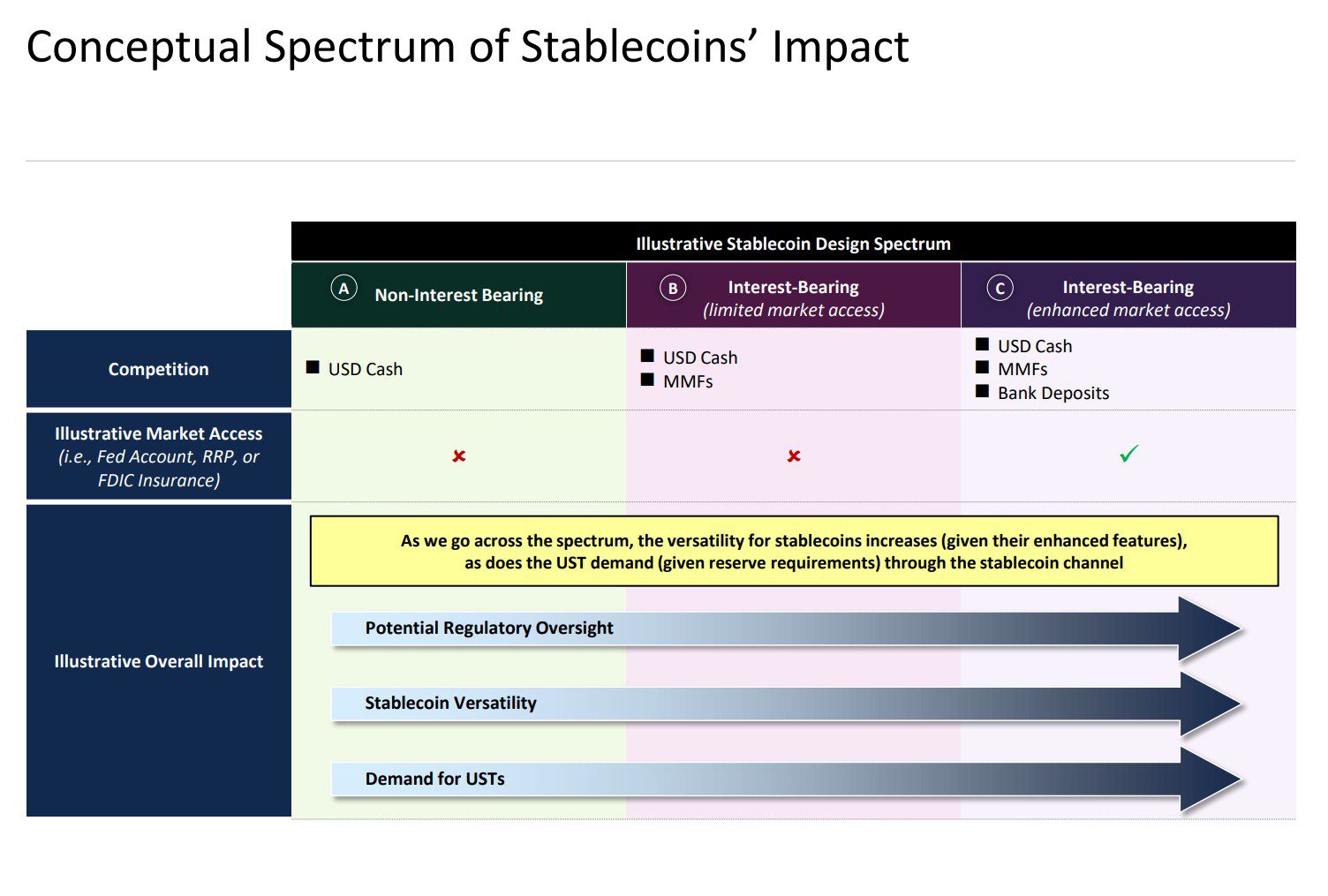The United States Department of the Treasury projects that stablecoins, cryptocurrencies pegged to the value of a traditional asset like the US dollar, are on track to achieve an aggregate market capitalization of approximately $2 trillion by 2028. This forecast is outlined in the Treasury’s Q1 2025 report.
Currently, the cumulative market capitalization of stablecoins hovers around $230 billion. However, the Treasury report indicates that “[e]volving market dynamics [have] the potential to accelerate stablecoins’ trajectory to reach ~$2tn in market cap by 2028.” This growth is fueled by several factors, including increasing adoption as a means of on-chain cash, the rise of tokenized money market funds, and the potential for future regulations solidifying stablecoins’ role in the financial landscape.
What are Stablecoins?
Stablecoins are a type of cryptocurrency designed to maintain a stable value, typically pegged to a fiat currency like the US dollar. This stability makes them attractive for transactions and as a store of value within the cryptocurrency ecosystem. Unlike volatile cryptocurrencies like Bitcoin, stablecoins offer a more predictable value, making them suitable for everyday transactions and use in decentralized finance (DeFi) applications.
Key Drivers of Stablecoin Growth:
- Ubiquitous Use as “Cash on-Chain”: Stablecoins are increasingly used as a digital form of cash for online transactions, enabling faster and cheaper payments compared to traditional methods.
- Rise of Tokenized Money Market Funds (MMFs): These funds offer an alternative to stablecoins by providing yield-bearing features, making them attractive to investors seeking returns on their digital assets.
- Regulatory Developments: Pending stablecoin legislation could require issuers to hold short-dated Treasury bills, further integrating stablecoins with traditional financial markets.

Impact on US Treasury Bills:
The growth of stablecoins is closely tied to the demand for US Treasury bills. Because many stablecoins are backed by reserves that include Treasury bills, increased stablecoin adoption leads to higher demand for these securities. The Treasury report acknowledges that “the growth in stablecoins has likely resulted in a modest increase in demand for short-dated Treasury securities.” Future regulations requiring stablecoin issuers to hold Treasury bills could further solidify this link.
Potential Challenges and Considerations:
While the Treasury report paints a positive picture for the future of stablecoins, there are potential challenges and considerations to keep in mind:
- Regulatory Uncertainty: The evolving regulatory landscape surrounding stablecoins could impact their growth and adoption. Clear and consistent regulations are needed to foster innovation while protecting consumers and the financial system.
- Competition from Central Bank Digital Currencies (CBDCs): The potential emergence of CBDCs could pose a challenge to stablecoins, as these digital currencies would be issued and backed by central banks.
- Operational Risks: Stablecoin issuers must manage operational risks related to their reserve management, security, and compliance.
The Dominance of USDT and USDC:
Currently, Tether’s USDT is the dominant stablecoin, commanding a significant market share. Circle’s USDC ranks second. The competition between these and other stablecoins is likely to intensify as the market grows. Below is a quick comparison table
| Stablecoin | Issuer | Market Cap (Approx.) | Key Features |
|---|---|---|---|
| USDT (Tether) | Tether Limited | $150 Billion | Most liquid and widely used |
| USDC (USD Coin) | Circle | $60 Billion | Focus on regulatory compliance |
Pressure on Retail Banks:
The report also suggests that the rise of stablecoins could put pressure on retail banks to offer more competitive interest rates to depositors. As stablecoins and tokenized MMFs offer alternative options for holding and earning on digital assets, banks may need to adjust their strategies to retain customers.

Conclusion:
The US Treasury’s projection of stablecoins reaching a $2 trillion market capitalization by 2028 underscores the growing importance of these digital assets in the financial landscape. As stablecoins continue to evolve and integrate with traditional financial systems, they have the potential to transform payments, investment, and access to financial services. However, addressing regulatory uncertainties and managing operational risks will be crucial to ensuring the sustainable growth and stability of the stablecoin market.